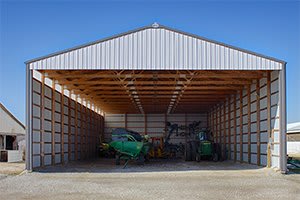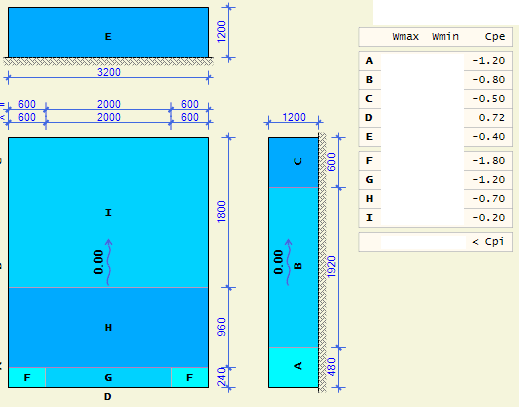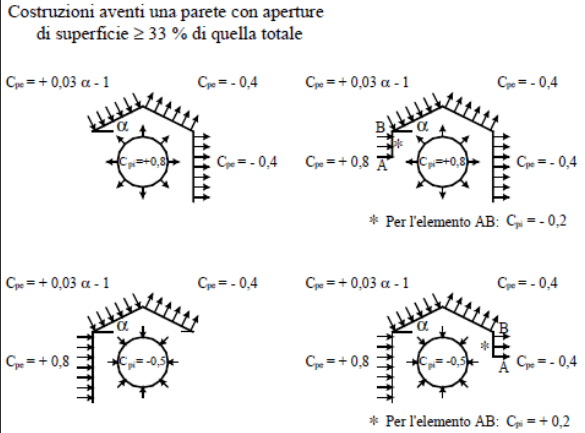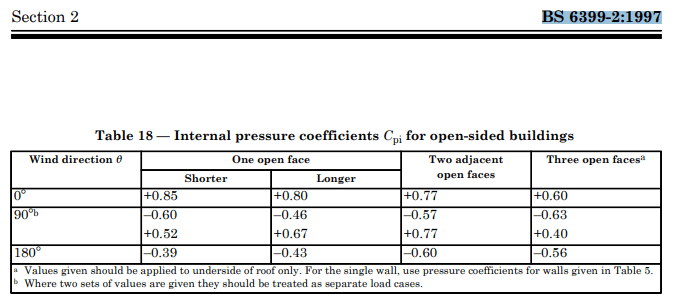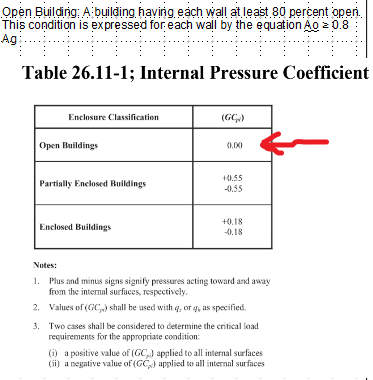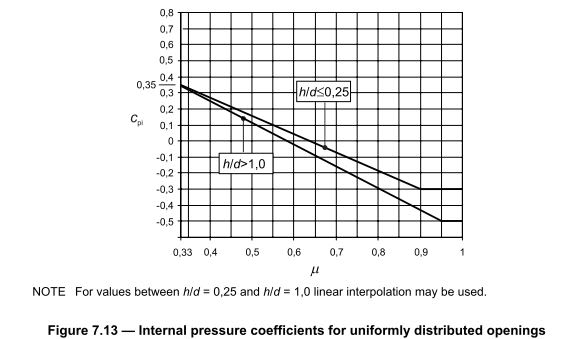Hi,
I'm aware of the clause 7.2. that says cpi=0.9xCpe (Internal pressure coefficients Cpi
for buildings with dominant openings), but I'm not sure if I interpret this as I should.
For example:
I have a building like this (with external coefficients cpe):
When I calculate cpi=0.9xcpe for areas A,F and G I obtain:
Cpi(A)=0.9x1.20=1.08
cpi(F)=0.9x1.80=1.62
Cpi(G)=0.9x1.20=1.08
for all the remaining areas cpi becomes quite small in my opinion when wind is blowing inside the building directly from open front side.....for example area
E following the same logic would be 0.9x0.4=
0.36
Than, I found an article online with this scheme (very straightforward compared to clause 7.2):
Internal pressure is +0.80 when wind is blowing inside the building and -0.50 when it's blowing from 3 other closed directions.
When applying this logic to areas A, F and G wind force will be smaller compared to clause 7.2. (Cpi=0.9xCpe), but all other areas will receive more wind force.
Also, the old BS 6399-2:1997 has a similar Table 18 that looks like this:
What is the correct approach to this problem? Use Cpi provisions for "buildings with dominant openings" or Cpi for "open-sided buildings" that apparently are not mentioned in EC1991-1-4?
Kind regards!
